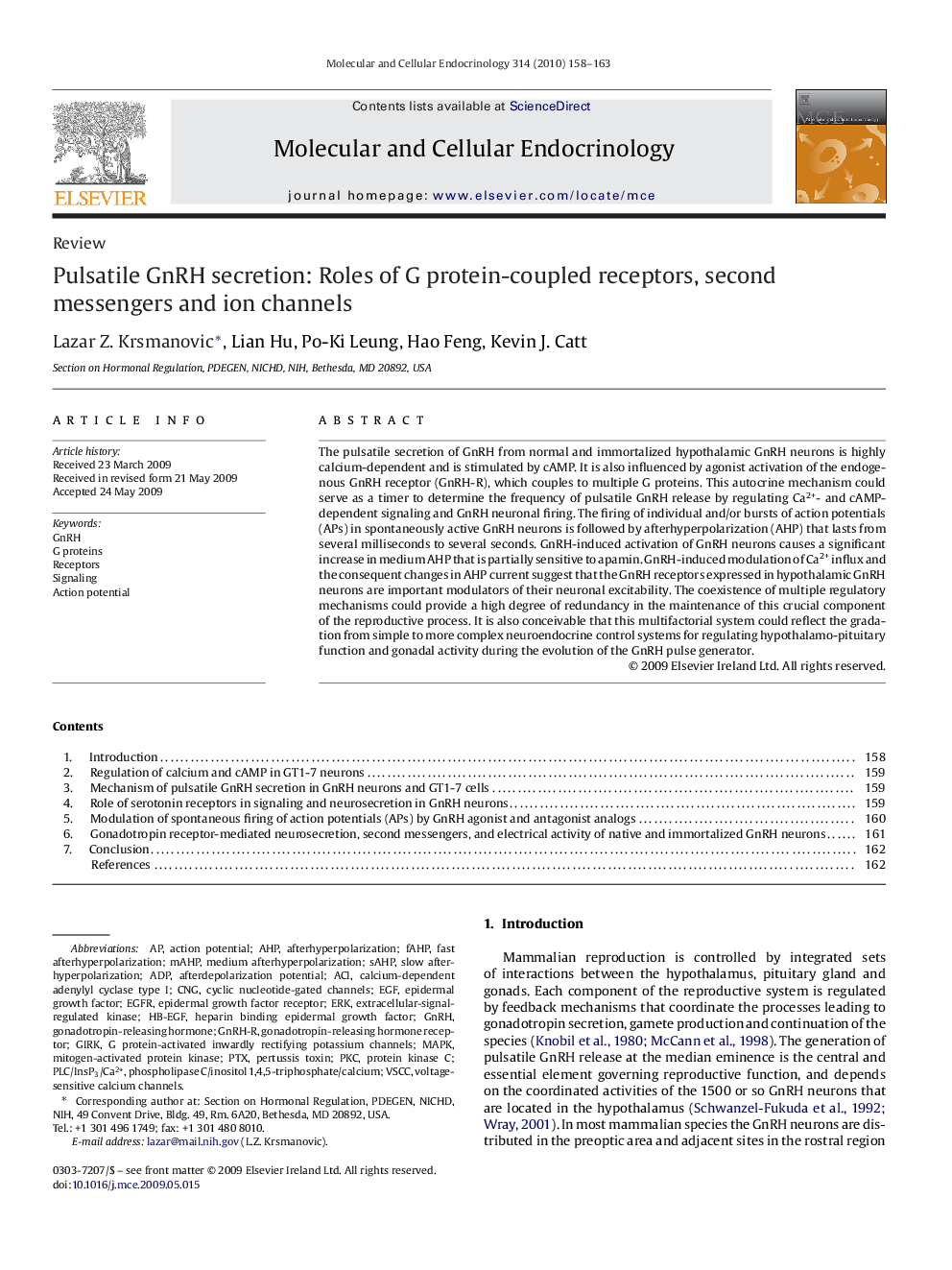| Article ID | Journal | Published Year | Pages | File Type |
|---|---|---|---|---|
| 2197106 | Molecular and Cellular Endocrinology | 2010 | 6 Pages |
The pulsatile secretion of GnRH from normal and immortalized hypothalamic GnRH neurons is highly calcium-dependent and is stimulated by cAMP. It is also influenced by agonist activation of the endogenous GnRH receptor (GnRH-R), which couples to multiple G proteins. This autocrine mechanism could serve as a timer to determine the frequency of pulsatile GnRH release by regulating Ca2+- and cAMP-dependent signaling and GnRH neuronal firing. The firing of individual and/or bursts of action potentials (APs) in spontaneously active GnRH neurons is followed by afterhyperpolarization (AHP) that lasts from several milliseconds to several seconds. GnRH-induced activation of GnRH neurons causes a significant increase in medium AHP that is partially sensitive to apamin. GnRH-induced modulation of Ca2+ influx and the consequent changes in AHP current suggest that the GnRH receptors expressed in hypothalamic GnRH neurons are important modulators of their neuronal excitability. The coexistence of multiple regulatory mechanisms could provide a high degree of redundancy in the maintenance of this crucial component of the reproductive process. It is also conceivable that this multifactorial system could reflect the gradation from simple to more complex neuroendocrine control systems for regulating hypothalamo-pituitary function and gonadal activity during the evolution of the GnRH pulse generator.
